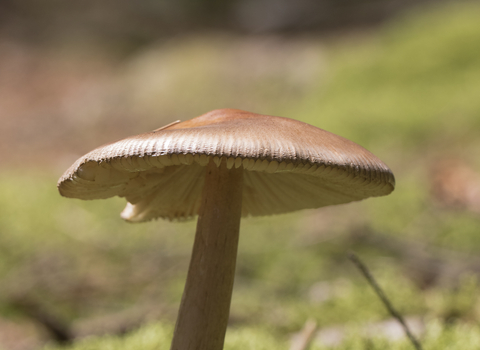
Tawny grisette ©Chris Lawrence
Tawny grisette
The tawny grisette has an orange-brown cap and a tall, slender stem that arises from a conspicuous cup-like sack. It can be found in woodlands, particularly those with Birch, but also on heaths.

Tawny grisette ©Chris Lawrence